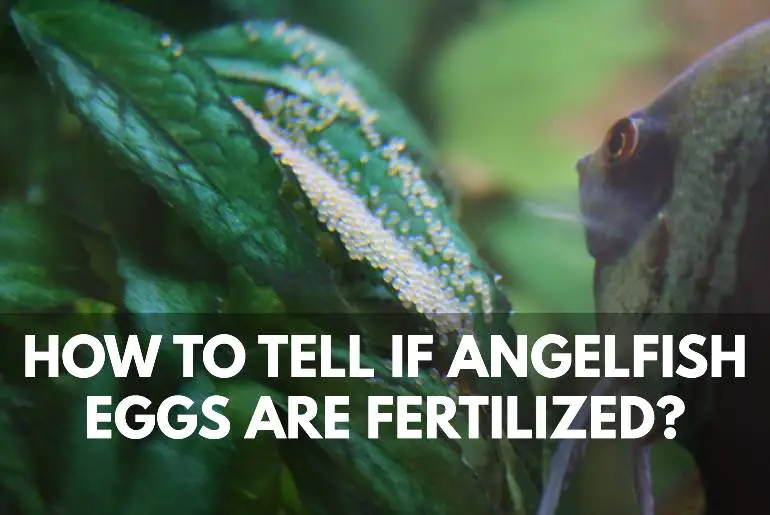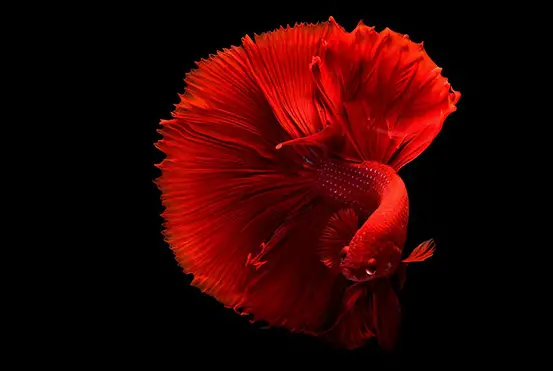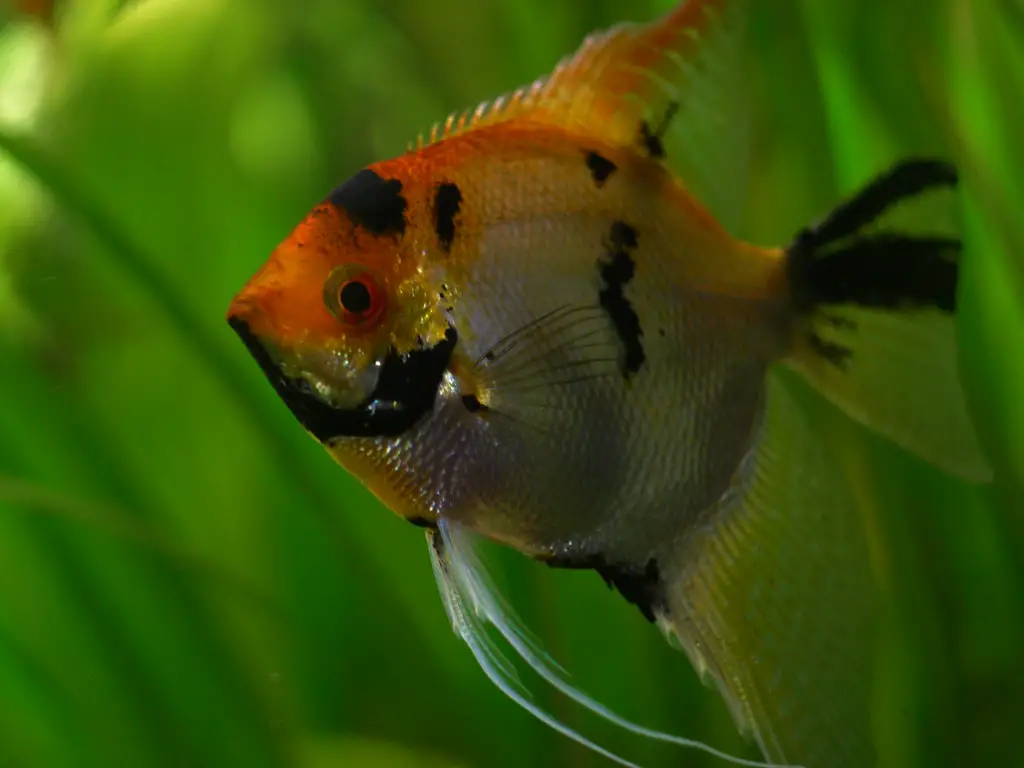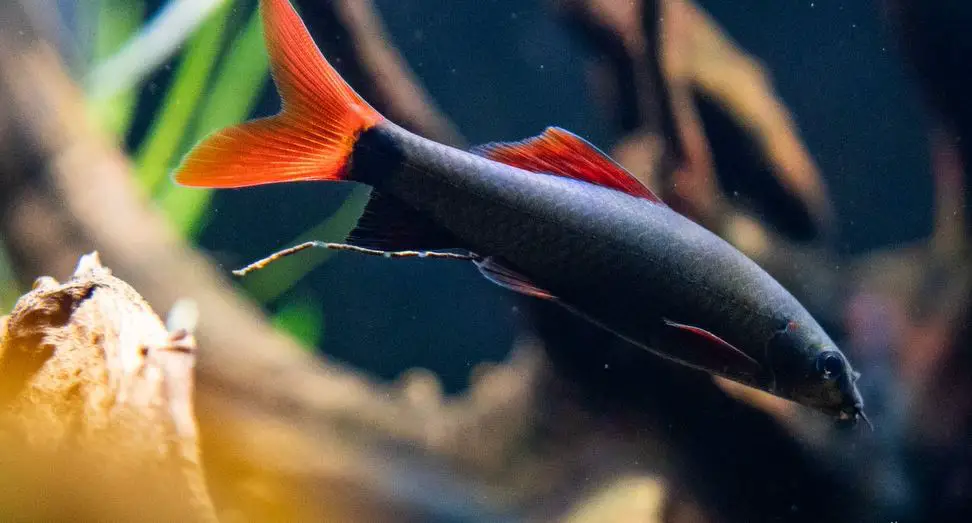If you have an Angelfish in your tank, this disappointment will hit you frequently. Why? Well. You can easily spawn an Angelfish. But, hatching the angelfish eggs is a whole another story.
Today, I will help you understand if your Angelfish eggs are fertilized or not, the reasons why your Angelfish eggs are unfertilized, how you can help the Angelfish to fertilize their eggs, and how to take care of the eggs. Now, let’s dive in.
The main feature of a fertilized egg is that its color is brownish amber instead of white, opaque which is the sign of a dead egg. The fertilized eggs stick to their spawn site and float when they’re removed from the spawning site. Perhaps the surest sign of a fertilized egg is that you can see the yolk sac, larvae, and oil globule inside their translucent eggshell. The Angelfish parents also signify a fertilized egg by guarding their eggs, nipping any fish that comes around.
Difference Between Fertilized And Unfertilized Angelfish Eggs
My friend had told me that he saw a few brown eggs (fertilized) among the white (dead) eggs. Thinking that the color of the eggs doesn’t matter for hatching, he went about with his work. A few days later, all of his Angelfish eggs had died.
Now that I’m thinking about it, my friends’ dead eggs caught a fungal infection that killed the fertilized eggs too.
I’ve listed below the signs of fertilized and unfertilized eggs. So that you can recognize and remove the dead eggs from the fertilized ones!
Unfertilized Angelfish Eggs
You’re in luck because unfertilized eggs are easy to diagnose.
- If you see that the egg is white or any pale color, it means the eggs are unfertilized.
- Moreover, you can’t see through the eggs; the eggs are opaque. This means that you don’t see any sign of life in this egg.
- Fuzzy white eggs are the worst. Well, this means that the eggs have fungus on them and are most probably dead. This is very common in Angelfish eggs.
- The unfertilized eggs also aren’t as sticky as fertilized ones. So, these unfertilized eggs don’t stick to the spawning site and sink in the tank.
Fertilized Angelfish Eggs
If your Angelfish eggs are fertilized, they’ll have these signs:
- Brown to amber in color
- See-through and translucent. You can see oil globules, yolk sac, and Angelfish larvae through the eggshell.
- Fertilized eggs are sticky and adhere to the spawning site which may be a leaf, slate, any vertical surface, and sometimes even the tank wall.
- Fertilized eggs are buoyant and float in water for some time before sinking. This buoyancy is provided by the oil globule which is present only in a fertilized egg.
How Do Parent Angelfish Behave If The Eggs Are Fertilized?
Are you finding it tough to understand if your eggs are fertilized? You might be a beginner who doesn’t know how to look at eggs. Well. I admit it myself that Angelfish eggs are so small and the diagnosis is difficult.
But, did you know that Angelfish parents display a certain behavior once they’re certain that they’re getting fries real soon? Yes, Angelfish parents can detect if their eggs are fertilized.
Here is the behavior you should notice in Angelfish parents:
- Cleaning the area around the spawning site.
- Biting and nipping any fish that swims around their eggs.
- Fanning the eggs to provide aeration.
I’ve literally seen Angelfish parent swallowing their kids, only to spit them out to a safe vertical slate.
Parent Angelfish, especially the experienced parents, are really protective of their young. So, if you see the Angelfish getting defensive and fighting with other tank mates, chances are the eggs are already fertilized.
Stages Of A Fertilized Angelfish Eggs
You have ensured that your eggs are fertilized. But, how will you monitor the progress after that?
Depending on the conditions of your tank, Angelfish eggs hatch sooner or faster. But, the average duration is 7 days.
Here, I will discuss the hatching stage of fertilized Angelfish eggs.
Pre-hatching Stage
The male Angelfish fertilizes the eggs within hours of laying. Usually, after 30 hours of fertilizing, the color of eggs appears brown or amber.
Moreover, you can observe some movement inside the egg as the eggs start to become translucent. You can easily see a beating heart and blood flow from a microscope.
Wriggler Stage
The wriggler stage is when the eggs start to wriggle and start becoming independent. This larval stage is after 2-3 days of hatching.
Wrigglers look like worms and tadpoles. And these wrigglers are attached to the spawning site by a filament that connects them to egg yolk. During this stage, the wrigglers get nutrition from egg yolk.
Fry Stage
After 6-7 days of hatching, the wrigglers transform into independent fry. Fry isn’t dependent on their parents and swims a few distances. However, some still cling to their parents for a few days.
You should provide a good diet during this stage as the fry doesn’t have egg yolk (like the wriggler stage) to sustain itself.
How Long Does It Take For An Angelfish Eggs To Hatch?
Considering that you’ve given the best conditions for your eggs to hatch, Angelfish eggs hatch within 60 hours after they’ve been laid.
To be fair, the following condition also plays a role in early hatching:
- Aeration provided to eggs
- Suitable water pH, the temperature of 80° Fahrenheit
- Clean tank water
Reasons Why The Angelfish Eggs Aren’t Fertilized And Die-Off
When you see white Angelfish eggs, you will wonder where everything went wrong. Well, here are the reasons why your Angelfish eggs die off.
Wrong Sexing And Fertility Issue
Before breeding your Angelfish, make sure to sex them properly. It is difficult to differentiate male Angelfish from female, you see.
I have seen Angelfish bonded as a pair. Later on, both Angelfish were laying eggs while there was no male to fertilize those eggs. Both the angelfish turned out to be females.
Another Issue may be infertility. If the eggs (even after fertilization) turn white, your Angelfish may be infertile. There is nothing you can do about this. Except for getting another pair of Angelfish to start the breeding process all over again!
Immature Or Inexperienced Angelfish
Many experienced Angelfish owners have expressed that a first-time breeding Angelfish doesn’t really care about their kids.
The parenthood of Angelfish only comes from inexperienced Angelfish who have had 2-3 breeding experiences. So, if you are breeding your Angelfish for the first time, you might just as well prepare for the dead eggs.
Fungus
Fungal infections are quite common in an Angelfish egg! Changing into dirty water, keeping decomposing material in the tank, and poor water conditions can induce fungus to grow on the eggs. This turns the eggs into white color.
Among the 400 eggs that Angelfish lay, some may be affected by fungus. And this fungus increases gradually until all the eggs are dead. This is because the fungus doesn’t leave the fertilized eggs and kills them too!
Bad Water Parameters
I understand that eggs are not fish. But, despite that, eggs need extra caution while they’re hatching; especially the Angelfish eggs!
Will you believe me when I say that unstable water parameters can kill an entire egg colony in a single night? As sad as it is true, Angelfish eggs are sensitive to extreme pH, temperature, and unclean tanks.
Bad Place To Lay Eggs
If you don’t provide some layers and plants in your tank, the eggs may just die off.
For instance, Angelfish lay eggs in the substrate if there are no platform or leaves around. The substrate doesn’t contain oxygen. So, the eggs just die off.
Moreover, some lay eggs in the heater which coagulates the eggs. The angelfish eggs turn into omelets this way.
Stress
Now, this one is sad to hear. But, due to stress, Angelfish just eat their own eggs. Other fish also eat up the Angelfish eggs if you’ve kept them in a community tank.
How Can You Help To Fertilize And Save The Fertilized Angelfish Eggs?
Well. Fertilizing Angelfish eggs is like quantum physics, right? Kind of yes and no too. Because, if you take care of certain things, you will yield lots of Angelfish fries in a few weeks.
Let us know how you can help to fertilize or save the fertilized eggs of your Angelfish below.
Sexing Angelfish Properly
Perhaps the most common mistake while breeding Angelfish is the sexing part. And, the reason is: It is difficult to sex an Angelfish.
Well, if you do this part right, you’ll solve 25% of the problem.
Male Angelfish are larger and have a circular body. Their breeding tube is pointed like a pencil tip. Moreover, male Angelfish have forked ventral fins and grow quickly than female Angelfish. The forehead bump of a male is very prominent.
What about a female Angelfish? Well, a female Angelfish has a sloping facial profile lacking any forehead bumps. Rounded and smooth ventral fins are present in a female. Cloaca is also wider in females. But, the breeding tube is wide and blunt. As you already know, females are smaller than males.
Keeping a male and female in the breeding tank ensures that the male will fertilize the eggs.
Get A Separate Tank
Keeping the Angelfish eggs in a community tank or species tank is okay. Angelfish are mostly good parents. These fish fan their eggs to aerate them and go feral to protect the eggs. But, if mood goes haywire, Angelfish can eat their own eggs even if it is fertilized.
If you observe your Angelfish eat their eggs, it’s time for you to be their parent.
Get a 20-gallon tank as the eggs will hatch into fry too. A 20-gallon tank is easy to take care of. You need few water changes. And even with a bare tank, you can raise the Angelfish fry easily.
Along with a separate 20-gallon tank, you need to buy 2 separate filters and a heater too. The filter should be a sponge filter because the fries can get stuck in an open filter.
And, acclimatization is very important before introducing the eggs into a separate tank.
Well, this means that if you keep them separate tank running for about 24 hours before keeping the eggs, the eggs will benefit greatly. That is because the pH of 6.8-7.8, temperature 72-82°F, and nitrogen balance will be maintained. But, don’t keep the angelfish eggs out to dry out as that may kill the eggs too.
Provide A Platform Like Slate For Laying Eggs
The wild Angelfish lay their eggs (spawn) on a platform like leaves, on top of plants. etc. A high ground, basically.
So, you can comfort your Angelfish by providing them a platform to lay their eggs. Well, you can provide any artificial or natural leafy plant too. But, I personally prefer a dark green-colored slate.
Leaves get upturned and cause the eggs to fall. But, the slate remains stable.
Prevent Fungus Development
Well, you might be aware by now of the fungus problem in Angelfish eggs.
Well, you can prevent (and even reverse) this problem with 1-3 drops of Methylene Blue solution. Use this solution without filter and watch your affected eggs live again.
But, methylene blue should be used in a limit. Excess methylene blue can be toxic for live fries as well as eggs.
Maintain Water Flow
To maintain the oxygenation and aeration of Angelfish eggs, you can insert an airstone connected to the air pump on a low setting.
Keep Friendly Tank Mates
Well, if you are not planning on keeping the eggs in a separate tank, at least keep friendly tank mates.
Hostile tank mates may end up eating the eggs. It’s even dangerous if a fight occurs between Angelfish and the hostile fish.
Some friendly fish you can keep with Angelfish are:
- Larger tetras and rasboras
- Gouramis
- Peaceful barbs
- Rainbowfish
- Corydoras
- Other medium-sized catfish
Take Care While Separating Eggs
Separating the delicate eggs is a critical thing to do.
Well, you can scoop out the eggs using a big turkey baster. Or, if your Angelfish has laid on a leaf, separate the leaf, and keep that leaf in a separate tank.
Since you are separating the eggs from Angelfish parents, you need to keep in mind that you are the parent now. And that you are responsible for hatching the cute eggs into fries.
FAQ
Do Angelfish Eat Their Eggs?
Angelfish, especially the inexperienced parents, eat their eggs. Moreover, stress might also be the reason why your Angelfish is eating their egg.
But, in some cases, Angelfish eat their dead eggs for cleaning purposes. As the dead eggs may catch fungus and affect the healthy eggs as well.
Can Angelfish Lay Eggs / Fertilize Eggs Without A Mate?
Angelfish are egg-laying fish. So, yes, Angelfish can lay eggs without a mate.
But, the thing is the egg alone cannot hatch into a fry. Because the egg needs to b fertilized by a male.
In a few instances, female Angelfish lay eggs even if there is no male to provide the sperm.
Conclusion
By now, I hope you understood how to know a dead egg from a fertilized one, and how you can take care of a fertilized egg. I hope you care for your Angelfish eggs as an Angelfish parent would.






